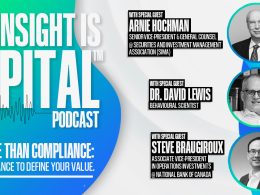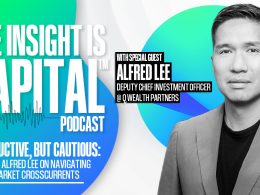5 Tips for Managing Employee Satisfaction in a Diverse Workforce
by Commonwealth Financial Network
 My favorite apple variety is honey crisp. I eat them by cutting them into slices, leaving the skin on. Do you have a different preference? Do you even like apples? And what’s with all this apple talk?
My favorite apple variety is honey crisp. I eat them by cutting them into slices, leaving the skin on. Do you have a different preference? Do you even like apples? And what’s with all this apple talk?
Well, knowing and understanding the needs of a diverse workforce is kind of like knowing that there are different varieties of apples. Every staff member is a person, but he or she is also an individual—a male or female, a member of a particular generation, and someone with different skills, experiences, goals, talents, and perspectives. As a result, each requires a personalized approach in the way you manage, treat, and lead him or her.
Each person’s needs vary, but there are several areas on which to focus that are vital for almost any employee’s sense of job satisfaction. And while this discussion is based on generalizations, I think you will find that many of these tips for managing employee satisfaction in a diverse workforce will be applicable to your business and to your staff.
We communicate with one another every day, and yet we still struggle with it. For example, consider the varied ways in which men and women report information.
- Women frequently provide more detail about people, setting, and context.
- Men tend to skim the surface, touching on a topic’s outlines and then moving on.
This distinction is important. If you don’t personalize your approach, you will miss opportunities to communicate in the most effective manner for each employee.
Different generations also call for different communication styles. Let’s look at Gen X (born between 1965 and 1980) as an example. In general, communicating with this generation means clearly explaining what you expect, the desired results, and the rewards you will provide for high performance. Then, after presenting the facts, be sure to ask for feedback. This will allow for the staff members' participation, something that Gen Xers value. This generation is informal when it comes to communication. Face-to-face is best, but e-mail is also acceptable.
Almost everyone appreciates feedback. The key is to determine the type and frequency each person wants.
Most employees are grateful for prompt feedback when they make a mistake, so they can learn from it and change the process going forward. And everyone appreciates hearing when they do something well. Some employees want feedback more often. Specifically, if your employee is a millennial (born between 1980 and 2000), he or she is used to getting a lot of attention. You’ll find that millennial employees want feedback almost any time, for almost any reason, not just when something hasn’t gone right. With this in mind, look for opportunities to offer words of praise or encouragement for a job well done.
Staff members tend to value flexibility, regardless of their gender or generation. This ranges from flexible hours, to having the opportunity to work from home occasionally, to having more control over their schedules, so they can time-block for projects.
Baby boomers (born between 1946 and 1964) were known for sacrificing their personal lives for career pursuits. Flexibility wasn’t a consideration for them back in the day; however, as this group ages, flexibility has elevated in importance.
On the other hand, Gen Xers work to live. This is similar to millennials, who want to fit their careers around their personal lives, and they use technology to achieve this goal.
Bottom line: Despite gender and generational differences, work/life balance is important to staff. You need to consider the level of flexibility that your firm can offer, and then try to provide the type of flexibility your employees seek.
Training and development offer a unique set of challenges, as people have different learning styles. Formal training is great for some, but others may learn by doing. Your task is to find out what each employee hopes to achieve and then help him or her get there.
Millennials, both men and women, report that their number-one reason for changing jobs is lack of development opportunities. When a millennial staff member feels that he or she is not growing in the workplace, it’s highly likely that he or she will become disengaged and search for another position.
Women tend to learn best through relationships with others, so mentoring is a good way to provide professional growth for them. Reverse mentoring is also effective. For example, a millennial woman might mentor a baby boomer in embracing and learning some new technology. Reverse mentoring can also help employees better understand one another, so they work together more cohesively.
In considering generational differences, it’s important to understand the culture in which these staff members were raised. For example, millennials have always spoken openly and freely to their parents and teachers, so it’s likely that they will share with you their thoughts and ideas about the work they are performing. This is not a sign of disrespect; it’s more about their desire to improve and make a contribution to the workplace.
But millennials aren’t the only ones who want to know that their opinions are valued and considered. This is important for women in general, who typically may not be as forthcoming about sharing their ideas and opinions as are men. By creating an open and accepting culture, you can demonstrate that your staff is heard, even if you don’t use their ideas.
Of course, it’s important to understand how differences in gender and generation can affect your interactions with staff. But it’s more important to understand that these differences are only a small slice of what makes each individual unique. As the leader of your firm, you must first take the time to truly know each staff person and then adapt how you lead to the interests, needs, and goals of that individual.
Do you adjust your communication style depending on your employee’s generation? What strategies do you find work best with millennials? Please share your thoughts with us below.
Commonwealth Financial Network is the nation’s largest privately held independent broker/dealer-RIA. This post originally appeared on Commonwealth Independent Advisor, the firm’s corporate blog.
Copyright © Commonwealth Financial Network

















